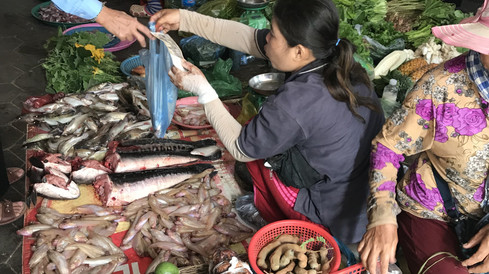The process of making rice noodles in Cambodia.
In rural Cambodia, Num banh chok or rice vermicelli noodles are still not automated, and most processes are done by hand with a stone mill.
They are then sold at the local market.
Vendors come early in the morning to purchase the noodles, which are then sold to the local residents.
The rice noodle-making process is long and arduous, although appreciated by every household in rural Cambodia.
Rice is boiled until soft and ground into a wet dough with a heavy stone mill.
Once all the rice is ground, the wet dough is placed into a large cloth bag.
Heavy mill parts are placed on top to squeeze out excess water.
This is the beginning of the fermentation process.
It is now ready to be placed in a deep rock mortar and pounded with a pestle, worked with leg power.
The dough is beaten on all sides, giving off a solid sour and yeasty scent.
After approximately fifteen minutes, the dough transforms from a rock-hard, floury ball to a smooth, elastic ball. This final dough form is then beaten until stiff peaks can be formed and placed into a metal noodle mould or cylindrical dispenser made with holes at one end.
The dough is squeezed through the holes, falling in strips into boiling water.
To ensure that the noodles do not clump together, an assistant stirs and lifts them from the boiling water into a pail of cold water, where they become less starchy.
The noodles are then placed on a tray, folded neatly, and portioned for serving.
The whole family joins in when making noodles.



















Comments